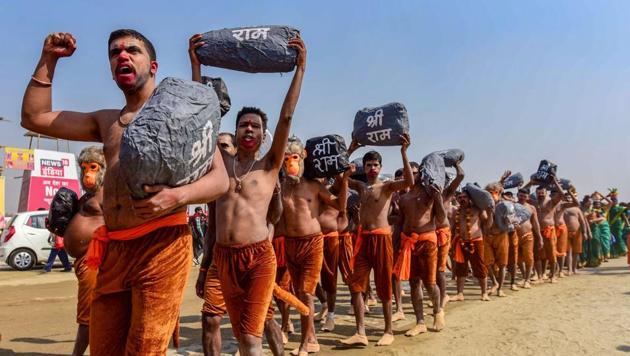The logic behind putting Ayodhya on the back-burner
The BJP realised that bypassing the court carried the political risk of alienating the moderate voter
The Vishwa Hindu Parishad’s (VHP’s) declaration that it will not organise any agitation for the construction of the Ram temple at the disputed site in Ayodhya for the next four months stems from a recognition of the limits imposed by India’s political, constitutional and legal framework. It is also a product of an internal deal within the various affiliates of the broader Sangh parivar — where the immediate goal of electing a friendly government has taken priority over the longer term goal of the temple.

Over the past few years, there was a concerted move by hardline elements within the Sangh, VHP and the broader community of Hindu saints invested in the cause to build public pressure for the temple. The logic for them went something like this: There was a conducive ideological climate. Even secular parties found it difficult to oppose the temple cause. The Bharatiya Janata Party (BJP) was in power at both the Centre and in the state. The Supreme Court (SC), through this pressure, could be persuaded to hear the case promptly. Elements within the BJP concurred, and believed that if the pressure did lead to a regeneration of the Hindutva momentum and a favourable court decision, it would be a blessing for the party for the 2019 general elections.
But the plot was not as linear. It became increasingly clear that the SC would hear the case at its own pace, following its own procedures, and not get affected by political timelines and public campaigns. The BJP — especially Prime Minister Narendra Modi — realised that bypassing the court and bringing in a legislation or ordinance would not be durable, would invite a legal challenge, and carried the political risk of alienating the moderate vote. The Sangh leadership also saw that building a crescendo for the temple could actually be counter productive for its own government if it could not deliver. But now that the base had been mobilised, something had to be done. The government filed a petition, seeking the SC’s permission to return the “excess” land to the original owners, the VHP backed Ram Janmabhoomi Nyas. The VHP had a face saver — for they could show this as proof of the government’s intent. The Sangh leadership was happy at reconciling the differences within its political and militant, religious affiliates. And the current decision to hold off the agitation reflects this truce. But make no mistake. Ayodhya will continue to be a campaign theme, and its peaceful and just resolution remains a key test of India’s secular, political and constitutional order.



